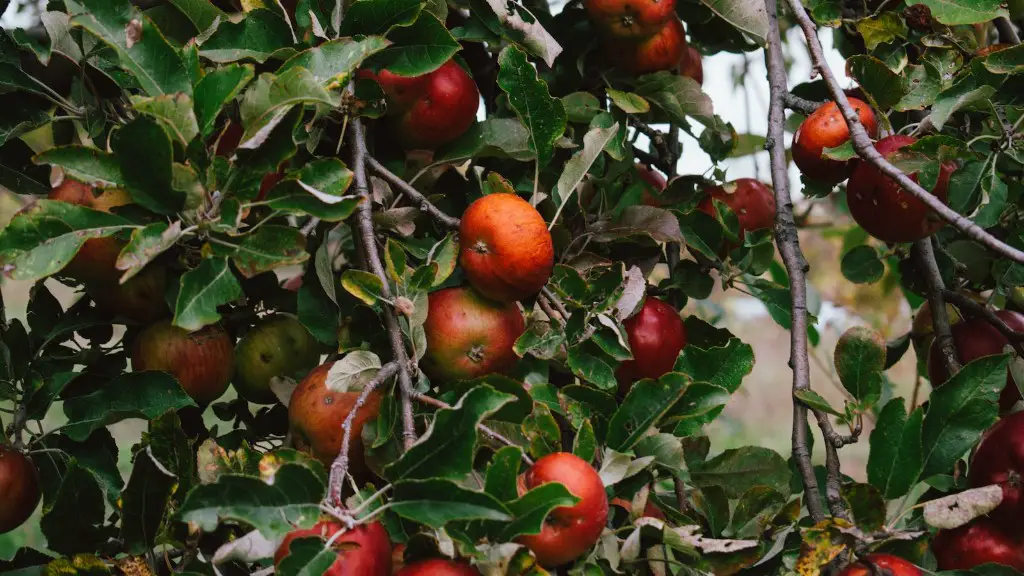The temperature you should bring a lemon tree inside depends on the local climate and your region, as well as the type of lemon tree you have. Generally speaking, it’s best to bring lemon trees indoors when night temperatures drop below 10°C (50°F). While most citrus trees can tolerate temperatures down to -2°C (28°F), it’s important to keep in mind that this is the absolute lower limit: the colder the temperature, the more likely your citrus tree is to suffer damage or die.
That said, there is some flexibility with what temperature you can bring your lemon tree inside. In areas with mild winters, it is usually safe to leave a lemon tree outside until the day temperature reaches 10°C (50°F). This can provide an important boost of energy for the plant for temperature-sensitive blooms and fruiting.
Whether or not you decide to bring your lemon tree inside will depend on whether it is a “hardy” or “tropical” type. Hardy types, such as Meyer lemons, can handle colder temperatures than tropical types such as ‘Eureka’ and ‘Lisbon’, which require warmer conditions (13-18°C/55-65°F).
If you plan to keep your lemon tree indoors, you will need to provide additional emotional and physical support to it. Because indoor temperatures are often too warm and dry, your tree may need extra humidity. If the air inside your home is too dry, it may be helpful to mist your lemon tree, or even place it on a tray of gravel filled with water.
When temperatures drop, it’s also important to provide protection from cold winds and drafts. If the winter months are particularly harsh, it’s a good idea to cover the pot with insulation or move to a warmer part of the house. It’s also important to give your lemon tree plenty of light, whether it’s indoors or outside; lemons need at least 6 hours of direct sunlight a day.
Finally, when you bring your lemon tree indoors, be sure to check it for any signs of disease or pests. This is a good way to prevent further problem before the winter months arrive. And if you’re worried about your lemon tree stressing out during the winter, you can also make sure to give it plenty of fertilizer. This will help keep it healthy and vibrant until it goes back outside in the spring.
Protecting Lemon Trees from Cold Weather
When bringing a lemon tree inside due to cold weather, there are a few important steps you should take. Properly wrapping and protecting the tree can help guard against the cold. Wrapping the pot in a few layers of newspaper or burlap can trap heat and help shield against below-freezing temperatures. It’s also important to make sure your lemon tree is well-ventilated, as too much humidity or trapped heat can cause discoloration or sunburn.
To protect your lemon tree from high winds or frosts, consider placing it in a sheltered spot in your home or yard. This can help reduce the chances of frost damage or other cold-related stress. If you live in an area with heavy snowfall and cold temperatures, it’s also important to consider the potential effects of moisture buildup. Make sure your lemon tree has plenty of room to breathe and isn’t overcrowded, as this could lead to rot or disease.
Finally, if you know you will be away for an extended period of time, it’s a good idea to bring your lemon tree indoors. The colder temperatures can be dangerous for citrus trees and failing to bring the tree inside could result in permanent damage or death. If you are leaving it out, make sure to check your local forecast for extended cold snaps, as these can be particularly dangerous for lemon trees.
Caring for Lemon Trees During Winter Months
When bringing a lemon tree inside, it’s important to provide proper care and maintenance during the winter months. Here are a few tips to keep in mind when caring for a lemon tree over the cold season. Firstly, make sure your lemon tree has plenty of sunlight, whether it’s indoors or outside. At least six hours of direct sunlight per day is essential, so provide a sunny spot if necessary. Additionally, it’s important to keep the soil moist but not saturated. Too much water can lead to root rot, so check the soil regularly and water only when necessary.
Also, provide your lemon tree with plenty of fertilizer, as this will help keep it strong and healthy. Most citrus trees require a fertilizer with a good balance of nitrogen, phosphorus, and potassium. Adding a few drops of liquid seaweed to the soil or giving the tree a foliar spray can also help promote growth. Last but not least, keep an eye out for insects or signs of disease. Pruning affected branches and cleaning off dead leaves or debris regularly can help prevent further damage or spread of disease.
Keeping Your Lemon Tree Healthy Year-Round
Providing your lemon tree with the right care and environment all year-round is the best way to keep it healthy and strong. Water your tree regularly and make sure to add a fertilizer with a good balance of nutrients. Additionally, prune away any dead branches or leaves and clean the pot of debris. A good rule of thumb is to trim back about a quarter of the tree’s branches during each pruning session.
It’s also important to remember that even when your lemon tree is inside, it still needs proper sunlight and ventilation. Place it in a sunny spot and make sure the windows are opened if there is a chill in the air. And lastly, make sure to check it regularly for signs of pests or disease. A healthy lemon tree can provide both visual and culinary satisfaction for many years to come.
Lemon Tree Care During Cold Weather
Certain precautions should be taken when bringing a lemon tree inside during cold weather. Make sure to provide your lemon tree with plenty of emotional and physical support during the winter months. Insulate the pot, mist the leaves as necessary, and place it in a spot with plenty of light. Additionally, it’s also important to remember that a lemon tree needs protection from cold winds and drafts, so make sure to take steps to shield it from extreme temperatures.
It’s also important to give your lemon tree the right amount of fertilizer. Using a balanced fertilizer that contains nitrogen, phosphorus, and potassium can help the tree stay strong and vibrant. Adding a few drops of liquid seaweed to the soil or giving the tree a foliar spray can also provide an extra boost of nutrition when needed.
When bringing your lemon tree inside, be sure to check the soil regularly. Make sure it’s not too wet or too dry and check for any signs of pests or disease. Lastly, if you know you’ll be away for an extended period of time, consider bringing your lemon tree inside. Cold temperatures can be dangerous for citrus trees, so this may be the safest option for you and your tree.
Lemon Tree Care After Cold Weather
After your lemon tree has been brought inside due to cold weather, properly caring for it is the key to a healthy and successful season. Before bringing it back outside, check for signs of frost damage such as discolored or dying leaves. Additionally, make sure to give your lemon tree plenty of light and water, as these two factors will help it heal and thrive.
It’s also important to give your lemon tree the right fertilizer. Most citrus trees require a balanced mix of nitrogen, phosphorus, and potassium. Adding a few drops of liquid seaweed or a foliar spray can also help nourish the tree and promote healthy growth. Lastly, prune away any dead or dying branches and clean away any debris or pests to prevent further damage or spread of disease.
When you’re ready to bring your lemon tree outside, make sure to give it time to adjust to the cold temperatures. Room temperatures should be slowly decreased over a period of time, rather than transitioning it from inside to outside instantly. This will help minimize any shock and stress placed on the tree.



